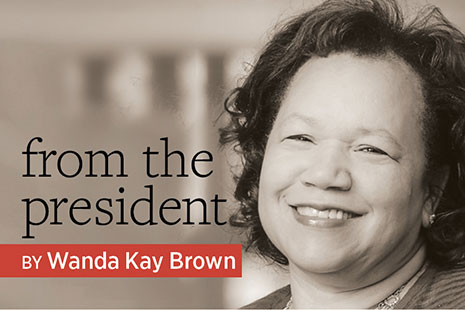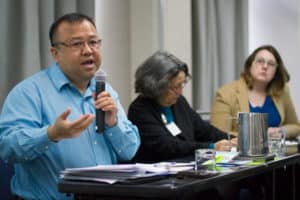
Autumn brings with it many traditions. For some, the season is synonymous with holidays and hot chocolate. For others, it’s about civic engagement: elections, politics, and democracy. Although the next major general election is still a year away, candidates are campaigning, new voters are registering, and pollsters are busy taking the temperature of a divided electorate.
Libraries have a role to play too. From hosting programs with local legislators and teaching patrons media literacy to offering support for online census questions and assistance with government e-forms, today’s libraries are hot spots of civic engagement.
Newcomers to this country, especially, see libraries as trustworthy guides on their path to integrating into their new communities. In fact, more than 55% of new Americans use their public library at least once a week, according to the Institute of Museum and Library Services. They access English language classes and citizenship and civic educational programs and tap into vital support networks.
Addressing the needs of new Americans is consistent with our profession’s commitment to treating all patrons with dignity and respect. It also intersects with my own interests and initiatives in understanding how libraries can address social and economic inequity. In the same way libraries have the power to disrupt the school-to-prison pipeline that disproportionately affects young men of color, libraries serve as safe spaces for vulnerable populations of immigrants, refugees, and other marginalized groups.
But what are our profession’s best practices when developing programs for new Americans? A recent initiative of the American Library Association’s Public Programs Office explored the range of programs new Americans need to thrive. Its recent report, “Library Programs and New Americans,” aims to understand what’s needed to advance our field’s work and establish criteria for libraries looking to expand services to this population.
Among other recommendations, researchers found that it’s essential for libraries to build partnerships with community organizations, develop multilingual resources specific to a community’s needs, create intergenerational programming, and forge connections between new Americans and longtime community members.
That’s exactly what the Houston Public Library’s “Living Room at Your Library” program aims to achieve. It brings communities together to discuss issues and share food from different cultures. At one recent event, participants compared empanadas from seven Spanish-speaking countries.
Sometimes responding to community needs means looking beyond what a patron might expect to find in a library. For example, Brooklyn (N.Y.) Public Library has added two full-time legal advisors to help patrons with citizenship applications and connect them to other free services.
The hope of involving longtime residents in the immigration discussion led the Saratoga Springs (N.Y.) Public Library to choose the novel Exit West by Mohsin Hamid for the annual “Saratoga Reads” community-wide literacy program, specifically to spark a discussion about refugees in a challenging and fraught political landscape.
American libraries have a long history of service to immigrants, and our nation’s libraries boast a proud legacy of promoting inclusion and diversity. Civic engagement can’t exist without an engaged citizenry, and I’m proud of the work of our association and its members—work that serves the needs of our patrons, no matter their immigration status.


